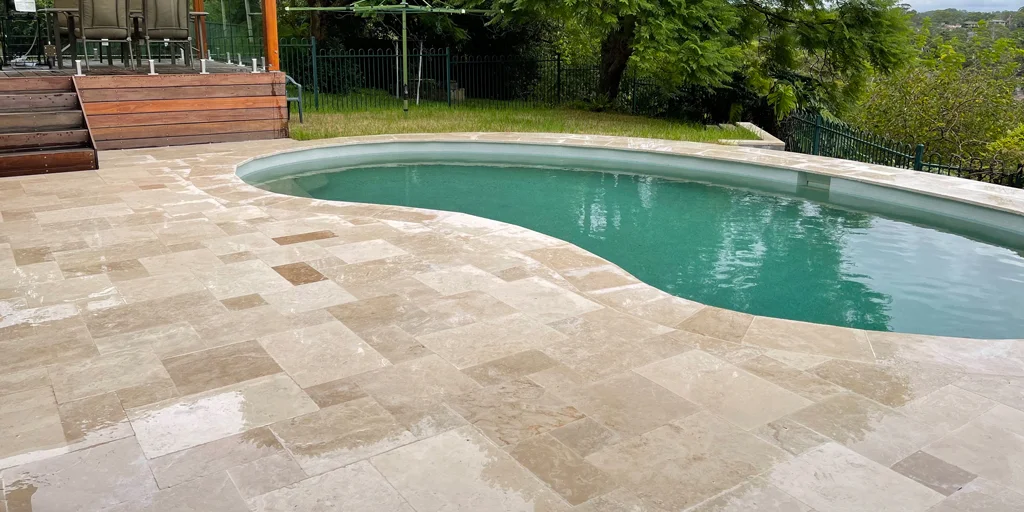Travertine pavers are prized for their timeless look and natural beauty — but they’re also porous, which means sealing isn’t just a finishing touch; it’s a form of protection. If you skip sealing your travertine pavers, you may start to notice subtle (and sometimes expensive) consequences over time.
1. Stains Become Permanent
Travertine naturally absorbs liquids like water, oil, and wine. Without a sealer, these liquids seep deep into the pores and leave behind dark, hard-to-remove stains. Even small spills can become permanent, especially on pool decks, patios, or driveways where traffic and moisture are constant.
2. Color Fades and Loses Its Natural Luster
Unsealed travertine is more vulnerable to UV rays, rain, and dirt. Over time, these elements dull the stone’s natural vibrancy. What once looked warm and luxurious can fade into a washed-out, chalky tone — especially in sunny or high-traffic outdoor areas.
3. Water Damage and Erosion
Because travertine is porous, water can penetrate deep into the stone. Repeated wet-dry cycles cause internal erosion and weakening, which may lead to surface pitting, cracking, or flaking. Around pools and fountains, this can happen even faster.
4. Mold, Mildew, and Algae Growth
Moisture trapped inside unsealed pavers becomes a breeding ground for mold and mildew. You might notice green or black patches appearing in shaded or damp spots. These aren’t just unattractive — they can also make surfaces slippery and unsafe.
5. Harder to Clean and Maintain
Unsealed travertine tends to hold onto dirt, debris, and grime. Routine cleaning becomes more difficult because stains and dust penetrate the surface instead of wiping away easily. You’ll find yourself scrubbing more often and still not achieving the same results.
Why Sealing Is Worth It – What happens if you don’t seal travertine pavers?
Sealing your travertine pavers forms an invisible barrier that repels water, resists stains, and preserves color. It also makes cleaning faster and prevents long-term damage — ultimately extending the life of your investment.
For most outdoor spaces, it’s best to seal travertine every 2–3 years, depending on traffic and weather exposure.
In short: Leaving travertine pavers unsealed may save time initially, but it leads to higher maintenance costs and a shorter lifespan. Sealing protects your stone — and keeps your outdoor spaces looking stunning for years to come.

